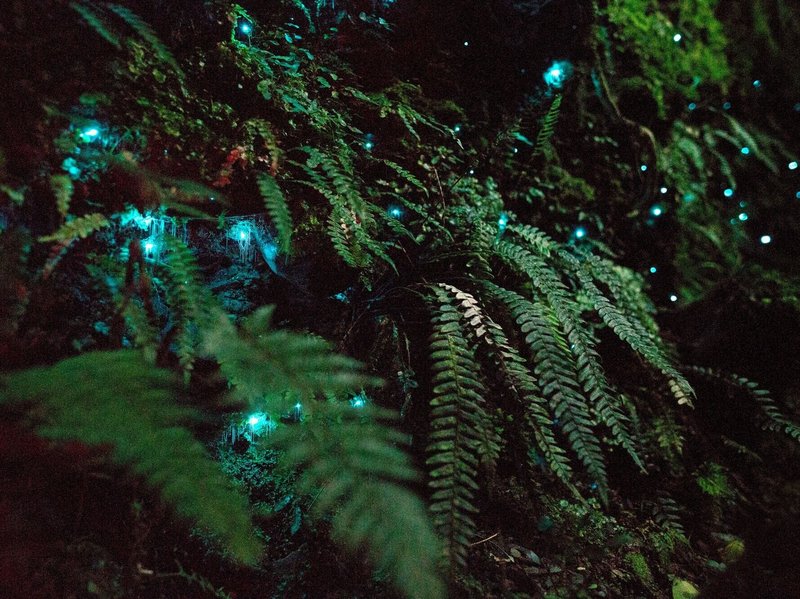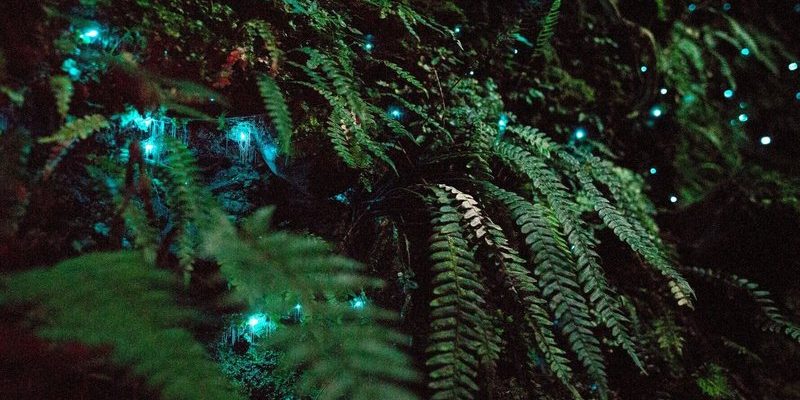
Glow worms, primarily found in places like New Zealand and parts of Australia, are fascinating little critters. They’re not actually worms but rather larvae of beetles. And just like the way we might choose a cozy, quiet corner of a café to settle in, glow worms have their own preferences for habitat. It’s all about finding that perfect, undisturbed spot in the soil where they can grow, thrive, and put on their magical light show.
What Are Glow Worms?
First, let’s get to know our little friends. Glow worms are the larvae of a specific type of beetle called *Lampyridae*. They have a unique way of attracting food (which often includes pesky insects) by producing a mesmerizing glow. This bioluminescence is what makes them so captivating at night. When you see those twinkling lights in the dark, it’s their way of saying, “Dinner is served!”
But why aren’t they just hanging out anywhere? That’s where soil quality comes into play. Glow worms need places where they can settle into the earth without too much disruption. Think of it as a cozy den—they want a safe spot to grow up and shine.
The Importance of Undisturbed Soil
So what’s the big deal about undisturbed soil? Imagine trying to build a sandcastle, but every time you start, someone comes along and kicks the sand. Frustrating, right? Well, glow worms feel the same way. They need stable, undisturbed soil to create their silk threads, which they use to trap food.
Undisturbed soil allows for a rich ecosystem that supports their survival. It’s not just about the worms; the soil is home to tiny organisms and nutrients that help them thrive. When the soil is disturbed, these vital resources can be lost, making it harder for glow worms to find a suitable place to live.
What Constitutes Undisturbed Soil Banks?
Now, let’s break down what we mean by “undisturbed soil banks.” Essentially, these are areas of soil that haven’t been heavily impacted by human activity or natural disasters. They’re often found in secluded areas where there’s little foot traffic, farming, or construction.
These soil banks are typically lush with organic matter, meaning there’s plenty of decomposing plant material. This organic matter enriches the soil, creating a great environment for glow worms. Think of it as a buffet where they can feast on all the good stuff as they grow.
Factors that Create Ideal Soil Banks
Several factors contribute to creating these ideal soil banks:
- Moisture Content: Glow worms thrive in moist environments. This moisture helps maintain the perfect conditions for their silk threads.
- pH Levels: Soil with balanced pH levels is crucial. Too acidic or too alkaline can be harmful.
- Plant Life: A rich diversity of plants contributes to the organic material in the soil, further attracting glow worms.
Without these factors, the vibrant glow you see could quickly disappear. It’s a delicate balancing act, much like maintaining your favorite plant at home. If you don’t care for it properly, it won’t thrive.
The Effects of Disturbed Soil
Let’s talk about what happens when soil gets disturbed. If you’ve ever tried planting flowers in a patch of soil that’s been compacted or disrupted, you know it’s a tough job. For glow worms, this disruption can come from various sources, including:
- Human Activity: Construction, farming, and even heavy foot traffic can compact soil and damage habitats.
- Natural Disasters: Events like floods or landslides can wash away or alter soil structures.
- Pests and Disease: An influx of pests can disrupt the balance of the ecosystem, making it less hospitable for glow worms.
When soil is disturbed, it can lead to increased competition for food and a lack of suitable shelter. In turn, this can reduce glow worm populations. It’s a domino effect that can alter entire ecosystems.
Why Protecting Glow Worm Habitats Matters
Here’s the thing: protecting the habitats of glow worms isn’t just about preserving their beauty; it’s essential for the overall health of the ecosystem. Glow worms play a pivotal role in their environment. By controlling insect populations and contributing to nutrient cycles, they help maintain balance in the ecosystem.
If their habitats get destroyed, we risk losing not only these enchanting lights but also the complex web of life surrounding them. Picture a forest without glow worms—a bit darker and less magical, right?
How Can We Help?
So, what can we do to help protect these delicate creatures? Here are a few steps we can take:
- Avoid Disturbing Natural Areas: Whether it’s hiking or building, stick to established paths to protect the soil.
- Support Conservation Efforts: Many organizations work to preserve habitats. Consider supporting them.
- Educate Others: Share what you’ve learned about glow worms and their significance!
Awareness is a powerful tool. The more we know, the better we can protect these little wonders of nature.
Glow worms are fascinating creatures with unique needs that help them thrive in undisturbed soil banks. These places are not just about the worms—they represent a delicate balance of nature that supports an entire ecosystem.
By protecting the habitats that glow worms depend on, we’re also safeguarding the intricate web of life that exists around them. So next time you spot those twinkling lights in the dark, remember the hidden world beneath them and the undisturbed soil that makes their magic possible. Let’s work together to keep these enchanting creatures shining brightly for generations to come!

